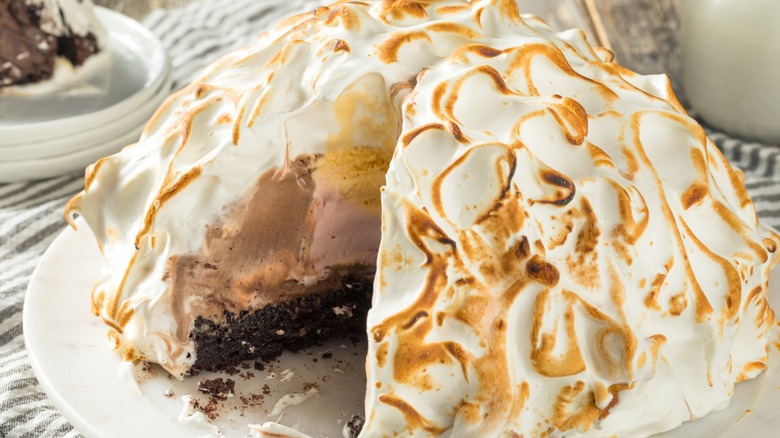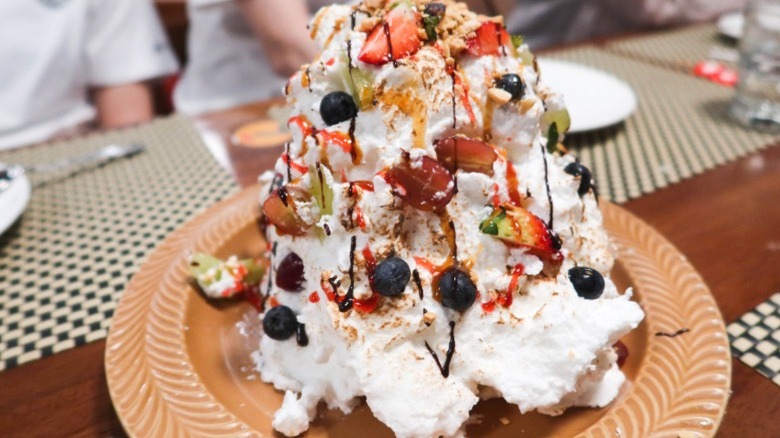Whatever Happened To The Once Popular Baked Alaska Dessert?
Some desserts will never go out of style. There will probably always be an appetite for ice cream on a hot summer's day, just as there will always be a special place on the kitchen counter for a freshly baked tray of chocolate chip cookies. But then there are the old-head desserts, the desserts that, for whatever reason, have all but vanished these days. Consider the airy chiffon pie, which fell out of favor compared to richer desserts, or oyster ice cream, whose fall from grace should be self-evident. But, what about that old favorite, the Baked Alaska? Why don't you see merry waiters setting fire to big, puffy desserts tableside these days? Simply put, Baked Alaskas are a lot of work, and restaurants and diners alike don't really want to bother with them anymore.
A Baked Alaska, for those who don't know, is essentially ice cream on a bed of sponge cake, topped with meringue and prepared in a way that creates an interesting temperature contrast. The goal is to caramelize the meringue and warm up the cake while still keeping the ice cream in the middle nice and cold. This is achieved either by placing the dessert in an extremely hot oven for a short time, or (more commonly) by using a blowtorch tableside, that classic hallmark of fancy food. (The dish was originally called "Alaska, Florida" at Delmonico's in the 1860s, to highlight the difference in temperature; despite the name, Baked Alaska did not originate in the Last Frontier.) It's delicious and theatrical, but it's also, well, a lot — for both chefs and diners.
Baked Alaska is a huge production
A restaurant's kitchen — any restaurant's kitchen — is a busy, hectic place. The heat is awful, everyone has to shout to be heard over the sound of cooking, and new orders arrive seemingly every second. Now imagine interrupting that chaos and making some of those chefs prepare a very finicky, very ostentatious dessert, one which requires precise temperature calibration so that the meringue is hot enough while the ice cream is still cold. And that's if it's being cooked in the kitchen — if it's being lit up tableside that becomes its own ordeal, one where the waiter has to carve up and serve a puffy monstrosity without making it look like the Stay-Puft Marshmallow Man exploding over Manhattan in "Ghostbusters."
So, that's why a restaurant might not have Baked Alaska on its menu. But, if there was sufficient demand, they'd have no choice, right? Indeed, Baked Alaska was a victim of changing trends among customers too — in the mid-20th century, ice cream pies were all the rage, and Baked Alaska rode that wave for a while. But as diners began to prefer cakes — denser and less cloyingly frou-frou — the Baked Alaska fell out of fashion. If it's served in restaurants today, it will usually be some kind of individual or low-fuss variation rather than the familiar midcentury song and dance.

